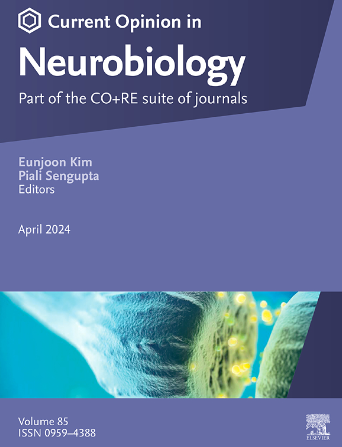Novel insights into the mechanisms of growth cone dynamics during axon pathfinding
IF 5.2
2区 医学
Q1 NEUROSCIENCES
引用次数: 0
Abstract
The growth cone (GC), a highly specialized and dynamic structure located at the tip of neuronal axons, plays a pivotal role in directing axon elongation and guidance during the formation of neural circuits. The GC's extraordinary ability to navigate toward target cells in a constantly changing environment relies on intricate mechanisms that operate at multiple levels, including cytoskeletal dynamics, activation of membrane proteins, transcriptional regulation, and local protein translation. These processes are finely coordinated, enabling neurons to respond rapidly to external cues, reach their intended targets, and establish functional connections. Dysregulation of these mechanisms can lead to errors in neuronal wiring, potentially contributing to nervous system disorders. This review highlights recent advances in understanding the regulatory mechanisms that orchestrate GC remodeling during axon pathfinding, with a focus on cytoskeletal components, membrane proteins sensing external cues, transcription factors influencing axonal decisions, and local protein synthesis within the GC.
轴突寻径过程中生长锥动力学机制的新见解
生长锥(growth cone, GC)是一种高度特化的动态结构,位于神经元轴突尖端,在神经回路形成过程中对轴突的伸长和引导起着关键作用。GC在不断变化的环境中导航到靶细胞的非凡能力依赖于在多个层面上运作的复杂机制,包括细胞骨架动力学、膜蛋白激活、转录调节和局部蛋白质翻译。这些过程是精细协调的,使神经元能够快速响应外部信号,达到预期目标,并建立功能连接。这些机制的失调会导致神经元连接错误,可能导致神经系统紊乱。本文综述了在轴突寻路过程中协调GC重塑的调控机制方面的最新进展,重点关注细胞骨架成分、膜蛋白感知外部信号、影响轴突决策的转录因子以及GC内局部蛋白质合成。
本文章由计算机程序翻译,如有差异,请以英文原文为准。
求助全文
约1分钟内获得全文
求助全文
来源期刊

Current Opinion in Neurobiology
医学-神经科学
CiteScore
11.10
自引率
1.80%
发文量
130
审稿时长
4-8 weeks
期刊介绍:
Current Opinion in Neurobiology publishes short annotated reviews by leading experts on recent developments in the field of neurobiology. These experts write short reviews describing recent discoveries in this field (in the past 2-5 years), as well as highlighting select individual papers of particular significance.
The journal is thus an important resource allowing researchers and educators to quickly gain an overview and rich understanding of complex and current issues in the field of Neurobiology. The journal takes a unique and valuable approach in focusing each special issue around a topic of scientific and/or societal interest, and then bringing together leading international experts studying that topic, embracing diverse methodologies and perspectives.
Journal Content: The journal consists of 6 issues per year, covering 8 recurring topics every other year in the following categories:
-Neurobiology of Disease-
Neurobiology of Behavior-
Cellular Neuroscience-
Systems Neuroscience-
Developmental Neuroscience-
Neurobiology of Learning and Plasticity-
Molecular Neuroscience-
Computational Neuroscience
 求助内容:
求助内容: 应助结果提醒方式:
应助结果提醒方式:


